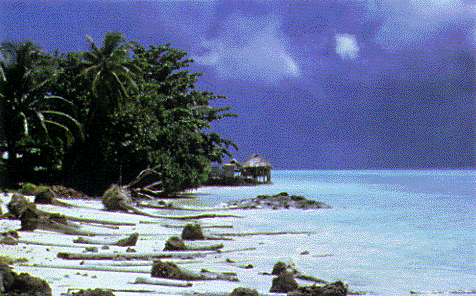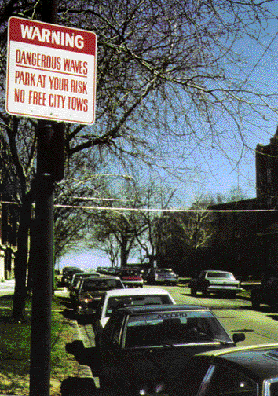Conclusions-
Earth-Science Challenges and Opportunities
 Coasts, as boundaries between land and water, are characterized by the geologic nature of the land, which is unstable and often fragile, and the dynamic power of wind and sea. As a result, coastal environments are constantly changing as they seek to achieve and maintain equilibrium among the many opposing natural forces. The vibrant beauty of shore areas is attracting a growing population of homeowners and vacationers; however, the ever-changing character of coasts makes them hazardous for people and, in the long term, for buildings and structures. The risks associated with living along a coast are comparable to those experienced by people living on a river flood plain, near an earthquake fault, or close to a volcano -- all carry the possibility of eventual catastrophe. Because coastal regions have wide public appeal as places to live, population growth continues to accelerate along our Nation's coastline. This population explosion superimposed on the dynamic forces acting on coasts is leading to a coastal crisis marked by the following concerns:
Coasts, as boundaries between land and water, are characterized by the geologic nature of the land, which is unstable and often fragile, and the dynamic power of wind and sea. As a result, coastal environments are constantly changing as they seek to achieve and maintain equilibrium among the many opposing natural forces. The vibrant beauty of shore areas is attracting a growing population of homeowners and vacationers; however, the ever-changing character of coasts makes them hazardous for people and, in the long term, for buildings and structures. The risks associated with living along a coast are comparable to those experienced by people living on a river flood plain, near an earthquake fault, or close to a volcano -- all carry the possibility of eventual catastrophe. Because coastal regions have wide public appeal as places to live, population growth continues to accelerate along our Nation's coastline. This population explosion superimposed on the dynamic forces acting on coasts is leading to a coastal crisis marked by the following concerns:
- Coastal erosion at widely varying rates affects all 30 coastal States and all of the U.S. Island Territories.
- During the past 200 years, more than half of our valuable wetlands have been lost due to a combination of natural processes and human intervention.
- Pollution of coastal areas has forced the closing of one-third of the Nation's shellfish beds, has restricted beach use, and has permanently contaminated ground water in some communities.
- In many coastal urban areas, hard-mineral resources such as sand and gravel for construction and beach nourishment are no longer available onshore. Offshore deposits may provide an alternative but pose environmental and economic dilemmas.
Intelligent stewardship of our coastal resources requires balancing human needs and expectations with coastal realities. Earth-science information that is based on sound scientific research on our coasts, the way they change, and the factors influencing their development is critical in any attempt to lessen the conflicts and ease the tensions brought on by competing human goals and natural processes.
Ignorance and continued disregard of the geologic processes that constantly reshape our coasts are tragically intensifying the collisions between people and nature. Despite historical precedents, catastrophes like Hurricane Hugo catch us unaware and unprepared. As powerful as Hugo was, it will be surpassed by bigger storms in the future; population growth and increased development along the coasts suggest that these future storms may cause even more damage and loss of life. Hugo is providing a regional incentive to increase our understanding of coastal environments and processes, and it is forcing an examination of laws and insurance regulations that govern societal actions within coastal zones.
Research Questions on Coastal Issues
Coordinated multidisciplinary efforts are needed to improve our understanding of how coasts form and evolve. A clear understanding of how coastal environments have formed and what natural changes they have undergone in the recent geologic past can be critical in predicting with confidence their future. Many different scientific disciplines must be involved. Many different scientific groups can provide critical expertise in specific fields of research. Cooperation among Federal, State, and local agencies will ensure that this scientific expertise is applied in site-specific studies to solve the individual problems that make up the coastal crisis. Concerted efforts focused on understanding our coasts require efficient coordination to get maximum return from the limited resources available.
As important as increasing our basic scientific understanding of the earth-science processes affecting coasts is, it is equally important to make this information available to coastal-zone planners, managers, and engineers in forms that they understand and can use. These groups must have adequate, accurate information on coastal processes in order to make decisions, assess risks, and solve problems in an efficient and cost-effective manner.
Some engineering practices and human activities that are incompatible with natural processes and that cause long-term harm to the coast can be modified to lessen their effect. In other cases, erosion mitigation techniques that closely replicate natural processes, such as beach nourishment, sand dune creation, and shoreline restoration, can be used to provide temporary protection. In extreme circumstances, abandonment and relocation of communities might be the best alternative.
 Dealing effectively with the present coastal crisis and resolving future conflicts along our coasts will require a combination of solutions that must be based on long-term societal needs and on sound scientific and technical knowledge, rather than emotional responses to short-term desires. Results of scientific investigations must be clearly communicated to coastal planners, engineers, and managers-and, most important, to political decision-makers and the public. Only when these diverse groups understand the range of choices, and the costs (social, financial, and environmental) and risks associated with each choice, can prudent and enlightened decisions be made.
Dealing effectively with the present coastal crisis and resolving future conflicts along our coasts will require a combination of solutions that must be based on long-term societal needs and on sound scientific and technical knowledge, rather than emotional responses to short-term desires. Results of scientific investigations must be clearly communicated to coastal planners, engineers, and managers-and, most important, to political decision-makers and the public. Only when these diverse groups understand the range of choices, and the costs (social, financial, and environmental) and risks associated with each choice, can prudent and enlightened decisions be made.
 Research and field investigations by the U.S. Geological Survey and other groups over the past few decades have enhanced our understanding of the processes affecting the coasts, but many uncertainties remain. The earth-science community -- the USGS and other Federal and State agencies, departments of academic institutions, and private research organizations -- is beginning to address many complex and fascinating scientific aspects of coastal evolution. Through focused and concerted efforts, earth scientists will be able to provide decisionmakers and the public with the information and interpretations they need in order to plan wisely for the future of our coasts.
Research and field investigations by the U.S. Geological Survey and other groups over the past few decades have enhanced our understanding of the processes affecting the coasts, but many uncertainties remain. The earth-science community -- the USGS and other Federal and State agencies, departments of academic institutions, and private research organizations -- is beginning to address many complex and fascinating scientific aspects of coastal evolution. Through focused and concerted efforts, earth scientists will be able to provide decisionmakers and the public with the information and interpretations they need in order to plan wisely for the future of our coasts.
